Abstract
Analyses of disciplines encompassing futures studies reveal a prevailing tendency to perceive time as a linear sequence of projections. However, this perspective is not applicable to the current context of social transformation in the age of globalization and digitization, such as sustainable development. Preliminary investigations into time-based design and futures studies have shown the potential of time-based paradigms for predicting reliable future scenarios and redesigning current forms of spaces, relationships, and services in response to these desired futures. In this paper, we describe a project of an Ephemeral and Temporary Space Design Laboratory, which has been a pedagogical experiment for 3 years to date in the School of Design at the Politecnico di Milano. The objective of this project is to systematically design an area of the city by reflecting on the relationship between design systems and social change, using participatory design methods such as field research and interviews with local residents to systematically redesign the urban space of the Lodi/Corvetto area in the city of Milan. This research aims to investigate the systematic influence of time factors on the spatial design of urban communities through futuristic and time/space-based design perspectives. The findings demonstrate that the utilization of time-based paradigms and tools can effectively enhance the time-based design approach, resulting in its increased integration within the design process. This integration plays a pivotal role in the construction of systems that have the capability to interact with and catalyze social transformation within the broader public and shared community.
1. Introduction
Analyses of disciplines encompassing futures studies reveal a prevailing tendency to perceive time as a linear sequence of projections [1,2]. However, such a perspective proves inadequate when confronted with the contemporary context of social transformation within the era of globalization and digitalization. The digital age has led to the implosion of the time horizon and the proliferation of forms of time to the ubiquitous [2]. The transformation and digitization of mobile internet and smart devices becomes necessary to enable people to live in a multi-temporal connection, in a continuous and “liquid” flow of the conditions of normality [3]. Hence, this context creates a distinct conceptualization of time, one that is unique to the future and to progress.
Acknowledging the existence of multiple manifestations of the futures becomes imperative as it recognizes the diverse array of temporal frameworks that serve as transformative scenarios to be adequately considered. The varying speeds, rhythms, synchronizations, and asynchronies inherent in different forms of time significantly impact the types of futures analyzed and proposed within the literature on futures studies. Spaces, communities, products, and services that are the focal points of research and practices in futures studies inhabit temporal realms that are increasingly heterogeneous and not necessarily synchronized. Consequently, the construction of dynamic scenarios becomes essential, infusing them with heightened complexity in their morphology.
Related Work
The forms of the times of contemporaneity, globalization, and digitization do not lie on a smooth Cartesian plane, but curl, fold, expand, and stretch producing, in turn, extremely complex scenarios of transformation and innovation [4]. Indeed, this multi-morphology of contemporary times goes beyond the cyclical nature of future inquiry and necessitates practical experience [5] in design systems to prevent succumbing to simplistic dystopian narratives. This paper focuses on two perspectives, one on time-based design and the other on the implications of futures studies for design systems and social transformation.
The definition of time-based design comes from research by Leupen, Heijine, and van Zwol in 2005, in which they began to investigate how the design of spaces would involve time. Leupen recognized that the speed of modernization and the unpredictability inherent in technological processes, made it very difficult for buildings to respond appropriately [6]. Many scholars [7,8,9,10] are becoming aware of the importance of considering time and spatio-temporal interactions, and its representation as a fourth dimension in urban and spatial planning and design. The complexity of exploring the impact of time-based design on social transformation needs to be considered from the integrated perspective of multiple disciplines. Zygmund Bauman (2007) introduced the concept of ‘liquid modernity’; he launched a deep reflection on the spatial-temporal morphology of places, on relationships and technologies which is still ongoing. The rationalized control of time and space is being reimagined as the nonlinear and placeless means of decision-making, relating, and exploiting within the multiple dimensions of an emerging digitized world [11].
From the perspective of urbanism, since Moreno proposed the concept of the 15 min city in 2016, which sparked discussions in other global cities, there have been emerging variations of the concept that seem to portray the same principle of “chrono-urbanism” while supporting the need for proximity-based indicators to better service urban areas. These approaches to chrono-urbanism are in line with studies underlining the importance of urban rhythms in order to understand the quality of life in cities; especially as space is relevant only when it is coupled with temporal dimensions [12,13]. This leads to the important concept of proximity in spatio-temporal design. Manzini (2022), in Livable Proximity, addressed investigating the qualities of time: the kind of hybrid proximity which helps to construct communities in different dimension, a place where encounters occur in the physical world, but that could not exist if they were not supported by what happens in the digital world.
The spaces were not the frame or the reference set for human actions, but instead became one of the possible media able to allow adaptability and flexibility in a continuous flow of changes characterized by an endemic uncertainty. The revolution introduced by smart technologies has led to a further possible scenario in the time-based design related to the mediation between humans and spaces: that these devices perform in acceleration, compression, and time overlap. They are able to accommodate temporal and functional instances in continuous mutation within real spaces [14]. These smart technologies reshape spaces, interiors, architecture, buildings, and infrastructures according to the needs, desires, and environmental conditions, as well as customize experience [15].
A time-based approach to futures studies is a momentous paradigm shift that aligns with the idea of the founding of a new civilization as advocated by futurists at the beginning of the millennium [16]. The predictions of the altered relationship between research and development, that were introduced by the Club of Rome, and the reality that shows that technological development, at least so far, have not made up for the scarcity of resources [17] making it necessary to rethink lines of development and growth that follow different time frames and speeds, which, at times, may even produce retroversions [18]. The end of the glorification of the single future has led to an awareness of the need for plural futures [19,20,21] and even the idea of time must be allowed for in its multiple forms; this allows for greater openness [22] to the creation of alternative futures or futures that can inexorably take us backward and futures that also belong to other countries and parts of the world unheard of so far.
This last consideration is important because it concerns a bias in futures studies culture related to an “ethnocentrism” and “tempocentrism” overly connected to a Western and metropolitan culture that has been, and perhaps still is, very pervasive. Design is playing a strategic role in the multidimensional, multi-temporal relationship “sustained by the contemporary designer’s awareness of the manipulation of time as an agent of stimulation and renewal [17]”.
The spaces in which we live, conceived under the auspices of a unidirectional, monotonous, and homogeneous conception of the future, have demonstrated their inadequacy in withstanding the far-reaching impacts of the digital revolution and the resultant spatio-temporal deformations it entails. These spaces are unsustainable in the face of the escalating crisis surrounding energy and material resources. Moreover, they perpetuate exclusivity when contrasted with alternative living models adopted by migrant populations, who, compelled by pressing circumstances, gravitate toward western metropolises with utmost urgency.
But above all, time-based design wanted to bring, within the discipline of space design, the possibility of looking at futures studies not only as speculative approaches to design, but also as a practice close to both communities and younger generations of designers through the design systems that can connect the various parts. Futures studies, from the perspective of time-based design, makes it possible to offer methodologies and practices to curb the impact of the hyper-present consequence of digitization in every sphere of every day and returns to the future and to perceive futures as scenarios to be constituted and not already established by stakeholders, above the practices of citizens and the projects of designers.
Though futures studies and time-based design have each explored the possibilities of social transformation from different perspectives, they have been less experimented with at the level of design education in universities. Design futures, as a branch of futures studies, is still in its infancy in terms of disciplinary construction. A GDFN report on the construction of design futures disciplines in 2022 stated [23], according to preliminary statistics, there are a total of twenty-six master’s programs in design futures, four doctoral programs, and seventeen teaching courses within six continents, which is a relatively small number. Especially in the discipline of spatial design education, there have not been many practices in this direction. Therefore, we would like to explore the potential of combining time-based design methods and futures thinking to foster the next generation of designers by presenting a master’s education program.
The interplay between time-based design and futures studies is part of a decade-long research within the School of Design of the Politecnico di Milano. This research endeavor has sought to explore the application of a time-based paradigm to envision plausible future scenarios and to reshape the configurations of spaces, relationships, and services in the present that can effectively accommodate these envisioned futures. By harnessing the time-based approach, the aim is to delineate reliable strategies for prefiguring and realizing desirable futures.
To understand the complexities of globalization and digitization that produce spatio-temporal deformations in urban communities and the challenges they pose for spatial design and education, this study considers the following research questions. First, how can time-based design methods and paradigms address the temporal and spatial deformation brought about by the digital revolution from a spatial design perspective? Second, how can this design approach integrate short-term design actions with long-term future vision goals? Third, how can design students contribute to social transformation by utilizing this systematic approach to address spatial design issues in local communities? Finally, what are the implications for the development of a new generation of designers through the introduction of futures studies and this approach in education?
In order to explore and address the research questions of time/space based design, we describe a case study approach to analyze a 3 year project of ephemeral and temporary spatial design laboratories at the School of Design of the Politecnico di Milano (Italy), which was used in a pedagogical curricular experiment aimed at students in a spatial design discipline to explore how a Master’s degree education at a university can develop students’ capacity to cope with the future transformation and by exploring how design-driven social transformation can be realized by thinking about the relationship between design systems and social change through the systematic design of an area of the city. This approach mixes front lectures, seminars, field research, and spatial experimentation. The aim of this methodology is to assess, through different types of experiments and feedback, whether it contributes to the training of a new generation of designers and to social transformation by introducing this systemic approach in teaching.
This paper is organized into four main sections. We begin with an overview of the literature research in related fields, including time-based design studies, design futures, and social transformation, expanding on the existing literature to illuminate the systemic impact of temporal factors on the spatial design of urban communities. We then present the specific context and contradictions of the case study. Next, we present the results and discussions of the time-based analysis, design thinking, and design systems for social transformation, as well as a description of the initial analysis and synthesis of the captured data. Finally, we present guiding principles for future design practitioners and educators.
2. Materials and Methods
2.1. Design Pedagoies: Future Studies from a Time-Based Perspective in the Laboratory of Spatial Design
The implementation of new approaches in educational offerings within the field of futures studies assumes a strategic significance within the School of Design. This strategic move serves dual purposes: firstly, to enhance the direction and guidance provided to upcoming generations of designers, and secondly, to instill a sense of futurism in the first generation of designers who are inherently well-versed in digital technologies but perhaps detached from considerations of future implications [24]. The objective is not limited to the exploration of macro-trends already identified by the Sustainable Development Goals (SDGs) for 2030 [25], but rather to orient futures studies in design schools towards the concept of “anticipatory action learning [26]”. In this regard, a time-based perspective employed in scenario formulation complements the spatial-based perspective. In particular, the Space Design Lab aims to design a design system within an urban area profoundly engaged in the process of urban transformation.
2.2. Challenges of Adapting the Course
Typically, design students are challenged to apply theory-laden approaches to concrete design problems [27]. The pilot study we describe in this paper was organized with the School of Design of Politecnico di Milano. The focus is on methods and case studies exploring design futures. The selection of the Lodi/Corvetto area as the focal point of investigation arises from its exceptional representativeness in showcasing the intricate interplay between design systems and social transformations, and how the adoption of a futures-thinking approach has the potential to reshape and redefine design spaces. Future scenarios unveil radicalization problems regarding the following problems: (1) gentrification, (2) social exclusion, and (3) the depletion of street-level activities. Presently, the Lodi/Corvetto Design System in Milan is engaged in numerous transformative initiatives that unfold through diverse avenues: firstly, top-down interventions orchestrated by real estate stakeholders, who seek to convert former railway stations into a “Village” for the Winter Olympics scheduled to be hosted by Milan/Cortina in 2026; secondly, bottom-up endeavors led by approximately 60 citizen and third-sector associations operating within the same area. Their resilient efforts aim to foster a collaborative decision-making framework, ensuring inclusive social transformation while mitigating the risks of financial gentrification.
The focal point of transformation, currently being actively addressed by these two driving forces, primarily revolves around the future trajectory of ground-level spaces—namely, the urban interfaces that serve as gateways between private and public realms, and which inherently function as the initial sites to register the effects of change. Among the multifaceted factors influencing these transformations, one significant dimension is the socio-impact stemming from the post-pandemic era, along with the emergence of novel configurations and behavioral patterns as a result of the COVID-19 pandemic [28].
2.3. Pedagogical Framework
This study was undertaken by master’s students enrolled in the Space Design Laboratory at the School of Design, Politecnico di Milano. Their objective was to employ a future-thinking approach to the design of the spaces in the Door Front City for the construction of design systems capable of impacting the social transformations of the coming years in the Lodi/Corvetto area.
The entire lab program lasted 5 months and involved approximately 50 students. It consisted of four main pedagogical methods, including: lectures, seminars, workshops, and field research in a co-design approach.
In addition to retaining the program of spatial design, futuristic approaches were introduced into the course, such as STEEP forces (Social, Technological, Economic, Ecological, Political) [29], common errors in futures scenarios [30], obligations to future generations [31], and alternative futures [32]. The framework for this pedagogy is that students first map the design system by thinking about the “present,” including communities, places, activities/services, time/space/chronotopes, and so on. Next, they were asked to think about “futures” scenarios, one of which each student should choose as an anticipation. Then look “back” and collaborate with the community to identify convergences, including KPIs and timing. By looking back and thinking about the futures, students identified design concepts that can be considered as alternative futures; by creating a back-casting, they developed narrations according to the different communities, identifying for each the different duration, speed, and orientation. In further work, students needed to design kits and tools (design props) to drive and measure the transformations toward the desirable futures, as well as conducting prototype development and testing of the project (ultimately making changes). Finally, they also needed to perform project installations and transformation projections and evaluate social change based on the predefined KPIs. (See Figure 1) Additionally, they needed to imply a time-based approach to analysis, as futures studies can be considered as a time-based approach to design, and without the ability to manipulate different times students will not be able to practice future design. As well as video and digital media, tools were used to document the field research and articulate the thinking process. Moreover, less than half of the students were local Italians and the majority of the participating students came from more than 10 other different countries. They were guided to work in teams of three, where each team member could not be from the same country, in order to promote brainstorming and cultural exchange. This approach also encouraged the students to overcome the difficulties that some non-natives or non-native speakers have in understanding the local culture and communicating with each other.
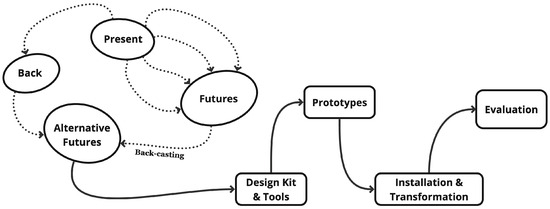
Figure 1.
Pedagogical framework of the teaching experiment. Made by authors.
The design system implemented within the Lodi/Covetto area included challenges for students to consider including several key aspects. Firstly, infrastructure and transportation: this facet encompasses the potential impact on the area resulting from processes such as the Zona a Traffico Limitato (ZTL) aimed at reducing traffic congestion and the presence of parked cars. These measures have the potential to mitigate environmental and noise pollution, while simultaneously fostering increased proximity to the city center and enhanced connectivity with the metropolitan area. Secondly, mobility and flow: this element revolves around the historical existence of a proximity system within the area. In the future, this system can be further consolidated and fortified through extensive consultations involving residents and commuters. By synchronizing the timing of activities, conflicts in terms of space and time can be mitigated, ensuring seamless mobility and flow within the area. Moreover, digital transformation in this emerging dimension is currently in its nascent stages but holds substantial potential to serve as an intangible and social infrastructure for the local communities and associations. It takes the form of a real-time bank, enabling the exchange and utilization of digital resources and services that can foster social cohesion and community development. By incorporating these design considerations, the aim is to optimize the functionality, livability, and sustainability of the Lodi/Corvetto area.
Social transformations associated with futures in the Lodi/Corvetto area encompass several dimensions:
- Communities: The application of a systematic approach to exploring futures provides avenues through which communities or organizations can plan for greater integration among themselves and rapprochement to preferred futures [32]. This approach enables communities to engage in proactive and inclusive practices that foster cohesion and collective decision-making processes (for an analysis of community user behavior from field research conducted by students in the course, see Figure 2).
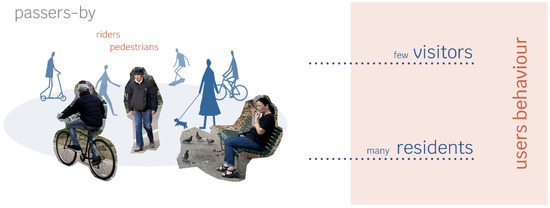 Figure 2. User behavior analysis of the community of Lodi/Corvetto. Students’ work.
Figure 2. User behavior analysis of the community of Lodi/Corvetto. Students’ work. - Immigrant phenomena: Immigrant phenomena affect first and second generations through ethnographic practices of futures [33] which can play a crucial role in addressing the challenges faced by first and second generations of immigrants. By incorporating futures thinking, these practices facilitate inclusive processes that enable immigrants to experience a sense of inclusion, active participation, and empowerment within the Lodi/Corvetto area.
- The fragility of local communities: Digital transformations and associated practices hold the potential to address the vulnerabilities and fragilities faced by local communities. Such transformations can enhance accessibility, connectivity, and integration, offering opportunities for marginalized groups to actively participate in shaping the future of the area (for field research conducted by students in the course to analyze different factors in the community, see Figure 3).
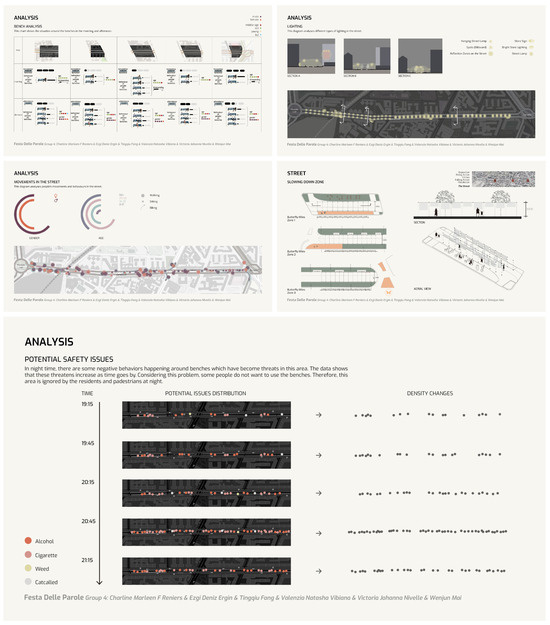 Figure 3. Analysis of different elements in the community to identify the social problems. Students’ work.
Figure 3. Analysis of different elements in the community to identify the social problems. Students’ work. - Marginalized groups: In particular, the elderly, immigrant women, and teenagers represent significant demographic segments within the area. However, their involvement in transformational decision-making processes and participation in scenario planning practices are currently limited. Efforts should be made to engage these inhabitants with inclusive practices that recognize their unique needs, aspirations, and perspectives, thereby fostering their active involvement in shaping the future trajectory of the area.
3. Results and Discussions
The field of futures studies has a rich and extensive history of incorporating diverse models and methodologies from various disciplines to explore, predict, and envision potential futures. The last decade has seen an emerging interest in theoretical, contextual, and practical plurality [34]. In addition, the practice of foresight has been used extensively in recent years to accommodate methods and approaches from design and the arts [35,36,37], signifying a receptive attitude towards analysis, process, design, and novel representations of emerging futures. This trend underscores a willingness to engage with diverse perspectives and embrace innovative approaches in futures studies.
3.1. Time-Based Analysis
The involvement of a time-based design approach is consistent with the idea of “integral futures paradigms” that include the greatest number of perspectives and methodologies in their exploration [5]. Methodologies for analysis that employ a time-based design approach involve the observation, analysis, and design of space through the lens of both present-based and foresight temporal paradigms. This approach encompasses examining the current situation as well as projecting and forecasting future scenarios. The time-based analysis takes into account the temporal characteristics of existing spaces and their potential systemic relationships, while foresight analysis focuses on identifying how and where transformations can be catalyzed. Within this framework, students developed their own repertoire of chronotopes, which are tools utilized in time-based surveys. These tools serve the purpose of identifying and understanding diverse temporalities and the spatial issues associated with them.
The chronotopes yield systemic and social attributes encompassing the following dimensions:
- Functional compatibilities between activities: Functional compatibilities that pertain to the alignment and coordination of activities within a given space.
- Individual and collective presences: This considers highlighting the interplay between individual and group dynamics and their impact on the spatial environment.
- Openings and closures: These refer to the temporal patterns of availability and accessibility.
- Timetables: These encompass the schedules and temporal organization of various activities and events.
- Connections: These represent the links and relationships established within the spatial context.
- Flows: These refer to the movement patterns and dynamics within the space.
- Natural and artificial light: This encompasses the interplay between natural lighting conditions and artificial illumination.
- Noise and soundscape: This relates to the auditory qualities and acoustic environment within the space.
By examining the representations of chronotopes (for an example of a chronotope tool developed by students in the course to analyze community environments, see Figure 4), it becomes possible to discern the diverse temporal qualities inherent in a given area. This process involves gathering quantitative and qualitative data that illuminate the temporal connections and spatiotemporal configurations, enabling foresight predictions and projections. While scholars often study the images of the future that are produced, they are mostly images, concepts, metaphors, or word clouds [38], the utilization of chronotopes offers alternative forms of representation. These representations may employ scalable quantitative tools such as questionnaires and surveys or adopt more qualitative and narrative approaches such as essays and focus groups. Consequently, the outcomes derived from chronotopes provide insights into potential futures in a manner that transcends mere verbal descriptions.
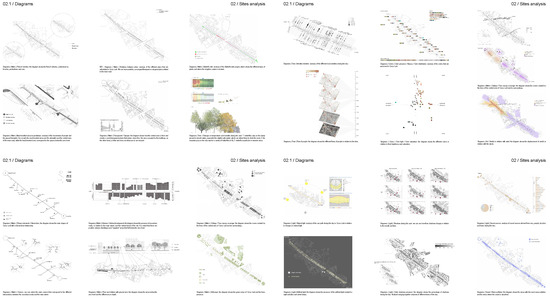
Figure 4.
Chronotopes for analyzing the environment of the community. Developed by students.
3.2. Future Thinking
Time-based analysis serves a crucial role in the future-thinking approach by instilling a heightened awareness of transformations and challenging the notion of fixed projects inherent in traditional spatial design approaches. By adopting a time-based design perspective (for an example of an analytical process through a time-based design approach and future thinking developed by students on this course, see Figure 5), the groundwork is established for future-oriented thinking, enabling the identification of strategic and pivotal themes that shape the area’s transformations. This approach facilitates the discernment of both the most probable and the least significant changes that may occur. Most of the future-thinking practices serve to engage students in considerations of what the context and area they work on might be in the future, and what the agents of social transformation might be [39].
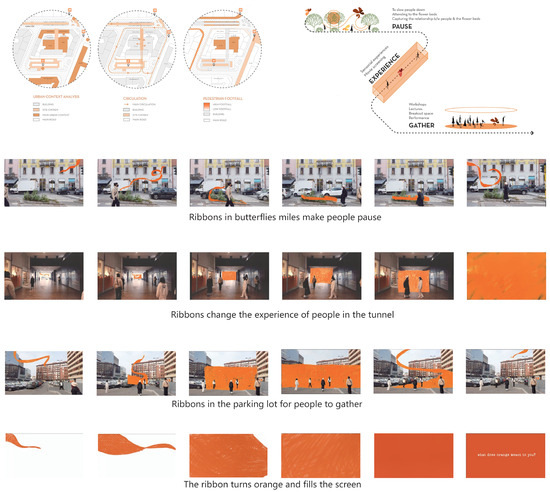
Figure 5.
Students’ work employing the time-based approach and future thinking in designing community spaces.
Futures thinking becomes a tool for exploring and designing systemic connections between parties through processes of conceptualization and proposing feedback loops for (pro) or to oppose (against) the scenarios that emerged with project actions and practices ultimately arriving at producing social innovation [40]. The identified themes serve as the foundation for foresight speculations and forecasts, informing the construction of scenario planning, and aligning with the aspirations outlined in the Sustainable Development Goals (SDGs) for the desired futures envisioned by 2030.
The majority of students embrace a minimum of 3–4 goals outlined by the United Nations as future aspirations and endeavor to design temporal transformations that facilitate and actualize these designated goals. Notably, within this domain, the prominence of goals associated with social transformations, including quality education, gender equality, sustainable cities, and partnerships for the goals, underscores the imperative for future-oriented actions to account for spatial and temporal frameworks capable of accommodating these transformative changes.
3.3. Design Systems for Social Transformations
Futures thinking and scenario planning have been mostly employed in the formulation of business strategies [34]. However, Stuart Candy’s experiential approach has highlighted a promising pathway for cultivating a generation of designers equipped to engage in futures studies with a comprehensive grasp not only of spatial dimensions but also temporal qualities. This expanded perspective recognizes the crucial role of time in shaping future scenarios, underscoring the importance of temporal considerations alongside spatial considerations in the practice of design.
During the mid-2000s, futurists Stuart Candy and Jake Dunagan embarked on a series of informal experiments involving the dissemination of “future artifacts” to receptive audiences, thereby engendering immersive encounters with prospective futures [41]. They called this approach “guerrilla futures” using an analogy with guerrilla theater, marketing, art, and semiotics [33]. These experiments have opened “promising new avenues for attempting complex collective acts of empathy, conversation, and deliberation in the public sphere” [42,43]. The application of a time-based perspective in futures studies served as an experimental undertaking, illuminating a vital constituent within the realm of participatory design.
The student’s engagement in the process can be described as twofold: that of futures researcher, gathering detailed narratives from citizens, and that of translator or mediator, interpreting their thoughts and concerns into experiential scenarios so that they can be more easily seen, heard, and told (An example of students’ work on analyzing the social environments by considering time-based and human-centered approaches, see Figure 6). The first stage brings futures to light; the next brings them to life [44]. This two-stage approach serves to bring futures to the forefront of awareness and subsequently breathe life into them. It is noteworthy that the Space Design Lab does not view design as an ultimate endpoint; the output of design is not the end in itself, but rather it is used as a means to discover, suggest, and provoke [33]. Design functions as a catalyst for futures, while futures reciprocally support design through various forms of activism, exhibitions, kits, chronotopes, maps, and diagrams.
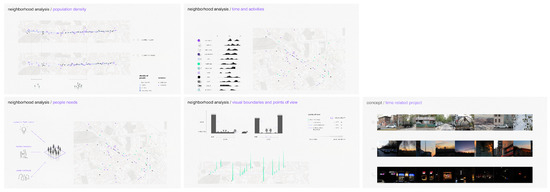
Figure 6.
Students’ work with consideration of human-centered and time-based approaches on designing community spaces.
The projects that derive from a time-based approach within a futures perspective demonstrate a keen focus on optimizing the utilization and repurposing of existing spaces. Rather than prioritizing the complete demolition and reconstruction of new structures, significant attention is given to vacant or underutilized spaces that have the potential to foster new forms of proximity. These projects revolve around the regulation and coordination of scheduling and flows to mitigate conflicts arising from shared spaces, and to promote inclusive and dynamic activities instead of insecurity and exclusion. They embody a design system that encompasses both visible and invisible infrastructures which serve to encourage community-building processes and facilitate the sharing of spaces. The actors involved in these transformations operate collaboratively, with active participation from both community members and designers, who adopt a maieutic approach to extract and refine values and parameters that guide the design process (An example of the collaborative work of designers and community members to guide the design process, see Figure 7).
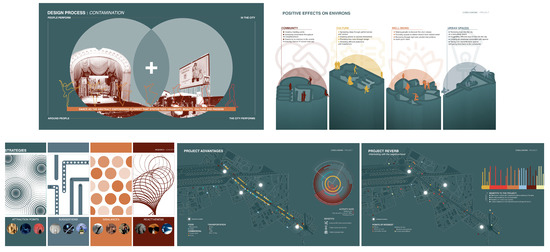
Figure 7.
Students’ work on analyzing and designing the spaces of the community.
The strategies employed in this approach entail the deliberate design of various elements, including attraction points, suggestions, imbalances, and reactiveness. These design choices aim to achieve several benefits, such as fostering increased engagement and participation from individuals, facilitating a more balanced distribution of activities, and fostering the establishment of a network of proximity. Collectively, these outcomes contribute to the realization of the desired scenario.
4. Conclusions
This study aimed to analyze existing theories and conduct teaching experiments to explore critical aspects of social transformation in urban communities. It seeks to elucidate the implications of a future-thinking design system for spatial design education and the social transformation of urban spaces. This examination is achieved through a combination of time-based analyses, which offer an opportunity for the field of spatial design to establish connections within the design system. Additionally, it provides a method and experiment for futures studies to address the hyper-present consequences of digitization across various aspects of every sphere. By adopting a time-based approach, designers can envision the future as a construct shaped by stakeholders rather than a predetermined scenario.
Engagement with the future is an encounter with a nontangible and invisible world that, nevertheless, has real and material consequences [45]. Understanding the various temporal dimensions and their implications in design systems becomes crucial in this regard. The integration of a time-based approach and the pedagogical experiments conducted with master’s students highlight the significance of incorporating temporal and future-thinking aspects. This integration facilitates a more comprehensive involvement of design in the construction of systems capable of interacting with and guiding the social transformations of communities, particularly in the context of the ground floors that are the public and shared ones.
The integration of a time-based approach in spatial design represents a relatively recent advancement within the broader field of design. While time aspects have been examined in urban planning studies such as Chrono-Urbanism [46,47], the concept of the 15-Minute City [9,10], and Robotic Architecture [48] within the realm of architecture, their application to smaller-scale spatial design has received comparatively less attention. However, it is imperative for researchers in spatial and interior design to recognize the potential influence of time aspects on social transformation. This study attempts to heighten the awareness of this potential, and future research endeavors will delve further into the effectiveness of a time-based approach to spatial design. Moreover, we hope to extend the design tool called “Chronotope” [49] that can measure and effectively incorporate time aspects within the spatial design process. Through these endeavors, our goal is to provide spatial designers with a constructive design methodology that facilitates their role transformation and fosters social innovation.
Author Contributions
Conceptualization, A.B. and Y.M.; methodology, A.B. and Y.M.; software, A.B. and Y.M.; validation, A.B. and Y.M.; formal analysis, A.B. and Y.M.; investigation, A.B. and Y.M.; resources, A.B. and Y.M.; data curation, A.B. and Y.M.; writing—original draft preparation, A.B. and Y.M.; writing—review and editing, A.B. and Y.M.; visualization, A.B. and Y.M.; supervision, A.B.; project administration, A.B. and Y.M.; funding acquisition, A.B. All authors have read and agreed to the published version of the manuscript.
Funding
This research received no external funding.
Data Availability Statement
Not applicable.
Conflicts of Interest
The authors declare no conflict of interest.
References
- Merleau-Ponty, M. Fenomenologia Della Percezione; Bompiani: Milan, Italy, 2003. [Google Scholar]
- Pallasmaa, J.; Franck, A.K. Architecture timed: Designing with time in mind. Archit. Des. 2016, 86, 50–59. [Google Scholar]
- Groys, B. In the Flow; PostmediaBooks: Milan, Italy, 2018. [Google Scholar]
- Barbara, A. Sensi tempo e architettura. In Spazi Possibili Per Umani e Non, 1st ed.; PostmediaBooks: Milan, Italy, 2012. [Google Scholar]
- Collins, T.; Hines, A. The evolution of integral futures: A status update. World Future Rev. 2010, 2, 5–16. [Google Scholar] [CrossRef]
- Leupen, B.; Heijne, R.; Van-Zwol, J. Time-Based Architecture; 010 Publishers: Rotterdam, The Netherlands, 2005. [Google Scholar]
- Barbara, A. Temporal dimensions in the mediation between machines, humans and spaces. SPOOL 2020, 7, 5–13. [Google Scholar]
- Gwiazdzinski, L. Redistribution des cartes dans la ville malleable. Espace Popul. Soc. 2007, 3, 397–410. [Google Scholar] [CrossRef]
- Manzini, E. Livable Proximity, Ideas for the City that Cares; EGEA: Milan, Italy, 2022. [Google Scholar]
- Moreno, C.; Allam, Z.; Chabaud, D.; Gall, C.; Pratlong, F. Introducing the “15-Minute City”: Sustainability, Resilience and Place Identity in Future Post-Pandemic Cities. Smart Cities 2021, 4, 93–111. [Google Scholar] [CrossRef]
- Bauman, Z. Liquid Modernity; Polity: Cambridge, UK, 2000. [Google Scholar]
- Mulíček, O.; Osman, R.; Seidenglanz, D. Urban rhythms: A chronotopic approach to urban timespace. Time Soc. 2015, 24, 304–325. [Google Scholar] [CrossRef]
- Neuhaus, F. Urban rhythms. In Emergent Spatio-Temporal Dimensions of the City: Habitus and Urban Rhythms; Springer: Cham, Switzerland, 2015; pp. 1–11. [Google Scholar] [CrossRef]
- Hassanein, H. Utilization of ‘Multiple Kinetic Technology KT’ in Interior Architecture Design as Concept of Futuristic Innovation; ARChive, Forthcoming: Budapest, Hungary, 2017. [Google Scholar]
- Carpo, M. The Second Digital Turn: Design Beyond Intelligence, 1st ed.; The MIT Press: Cambridge, MA, USA, 2017. [Google Scholar]
- Slaughter, R. Futures studies as a civilizational catalyst. Futures 2002, 34, 349–363. [Google Scholar] [CrossRef]
- Celaschi, F.; Formia, E.; Franzato, C. Back to the Future. Time and futures studies in the contemporary, design-driven approach to innovation. DIID—Disegno Ind. Ind. Des. 2018, 64, 126–133. [Google Scholar]
- Barbara, A. Future Convergences: Time Matters. In Cross-Cultural Design. Interaction Design Across Cultures, Proceedings of the HCII 2022, Lecture Notes in Computer Science, Virtual, 26 June–1 July 2022; Rau, P.L.P., Ed.; Springer: Cham, Switzerland, 2022; Volume 13311, pp. 429–438. [Google Scholar]
- Boulding, E. Building a Global Civic Culture: Education for an Interdependent World; Syracuse University Press: New York, NY, USA, 1990. [Google Scholar]
- Hurley, K. Is that a future we want? An ecofeminist exploration of images of the future in contemporary film. Futures 2008, 40, 346–359. [Google Scholar] [CrossRef]
- Slaughter, R. Integral Futures Methodologies. Futures 2008, 40, 103–108. [Google Scholar] [CrossRef]
- Gidley, J.M. The Future: A Very Short Introduction, Online ed.; Oxford University Press: Oxford, UK, 2017. [Google Scholar]
- GDFN. Blue Book on Design Futures Discipline Construction; Tsinghua University: Beijing, China, 2022. [Google Scholar]
- Barbieri-Masini, E. A vision of futures studies. Futures 2002, 34, 249–259. [Google Scholar] [CrossRef]
- Cornish, E. Futuring: The Exploration of the Future; World Future Society: Chicago, IL, USA, 2004. [Google Scholar]
- Inayatullah, S. Reductionism or layered complexity? The futures of futures studies. Futures 2002, 34, 295–302. [Google Scholar] [CrossRef]
- Scupelli, P. Teaching to Find Design Opportunities for Behavior Change Through Causal Layered Analysis. In Proceedings of the 2020 Human-Computer Interaction International Conference. 2020 HCI International Conference, Copenhagen, Denmark, 19–24 July 2020. [Google Scholar]
- McAuley, J.W.; Nesbitt-Larking, P.W. Imagining the Post-COVID-19 Polity: Narratives of Possible Futures. Soc. Sci. 2022, 11, 346. [Google Scholar] [CrossRef]
- ARUP. Foresight Consulting. 2018. Available online: http://www.driversofchange.com/ (accessed on 1 July 2023).
- Cascio, J. “Bad Futurism”, Retrieved May 4, 2020. 2012. Available online: https://www.youtube.com/watch?time_cotinue=1&v=oYb9mZh90r4&feature=emb_logo (accessed on 1 July 2023).
- Dator, J. Caring for Future Generations. 2007. Available online: https://manoa.hawaii.edu/futures-center/publications/ (accessed on 1 July 2023).
- Dator, J. Alternative Futures at the Manoa School. J. Futures Stud. 2009, 14, 1–18. [Google Scholar]
- Candy, S. The Futures of Everyday Life: Politics and the Design of Experiential Scenarios. Ph.D. Thesis, University of Hawaii, Manoa, HI, USA, 2010. [Google Scholar]
- Schwartz, P. The Art of the Long View: Planning for the Future in an Uncertain World, Reprint ed.; Currency: Sydney, Australia, 1996. [Google Scholar]
- Candy, S.; Kornfeld, S.; Dunagan, J.; Nichols, W. Our Plastic Century. 2010. Available online: https://legacy.iftf.org/future-now/article-detail/our-plastic-century/?p=future-now/article-detail/our-plastic-century/ (accessed on 1 July 2023).
- Davies, C.; Sarpong, D. The epistemological relevance of the arts in foresight and futures studies. Futures 2013, 47, 1–8. [Google Scholar] [CrossRef]
- Dunagan, J.; Jeffery, L.; Fidler, D.; Maguire, R. The Magic of Kidstech; Institute for the Future: Palo Alto, CA, USA, 2011. [Google Scholar]
- Eckersley, R. Portraits of youth: Understanding young people’s relationship with the future. Futures 1997, 29, 243–249. [Google Scholar] [CrossRef]
- DiSalvo, C. Spectacles and tropes: Speculative design and contemporary food cultures. Fibreculture 2012, 20, 109–122. [Google Scholar]
- Motti, V.V. Futures Studies. In The Palgrave Encyclopedia of the Possible; Palgrave Macmillan Cham: London, UK, 2020; pp. 1–5. [Google Scholar]
- Candy, S.; Dunagan, J. The experiential turn. Hum. Futures 2016, 1, 26–29. [Google Scholar]
- Dunne, A.; Raby, F. Speculative Everything: Design, Fiction, and Social Dreaming; The MIT Press: London, UK, 2013. [Google Scholar]
- Yelavich, S.; Adams, B. Design as Future-Making; Bloomsbury Publishing: London, UK, 2014. [Google Scholar]
- Candy, S.; Kornet, K. Turning foresight inside out: An introduction to ethnographic experiential futures. J. Futures Stud. 2019, 23, 3–22. [Google Scholar]
- Adam, B.; Groves, C. Future Matters: Action, Knowledge, Ethics; Brill: Leiden, The Netherlands, 2007; Volume 3. [Google Scholar]
- Gwiazdzinski, L. The malleable, adaptable metropoles: Towards a temporary and temporal urbanism. Stream 2014, 3, 51–63. [Google Scholar]
- Gwiazdzinski, L. Co-design Times and Mobilities. In The Routledge Handbook of Urban Mobilities; Routledge: Abingdon, UK, 2020. [Google Scholar]
- Bier, H.; Knight, T. Digitally-Driven Architecture. Footprint 2010, 6, 1–4. [Google Scholar] [CrossRef]
- Drevon, G.; Gwiazdzinski, L.; Klein, O. Chronotopies-Lecture et Écriture des Mondes en Movement; Elya éd: Grenobe, France, 2017. [Google Scholar]
Disclaimer/Publisher’s Note: The statements, opinions and data contained in all publications are solely those of the individual author(s) and contributor(s) and not of MDPI and/or the editor(s). MDPI and/or the editor(s) disclaim responsibility for any injury to people or property resulting from any ideas, methods, instructions or products referred to in the content. |
© 2023 by the authors. Licensee MDPI, Basel, Switzerland. This article is an open access article distributed under the terms and conditions of the Creative Commons Attribution (CC BY) license (https://creativecommons.org/licenses/by/4.0/).